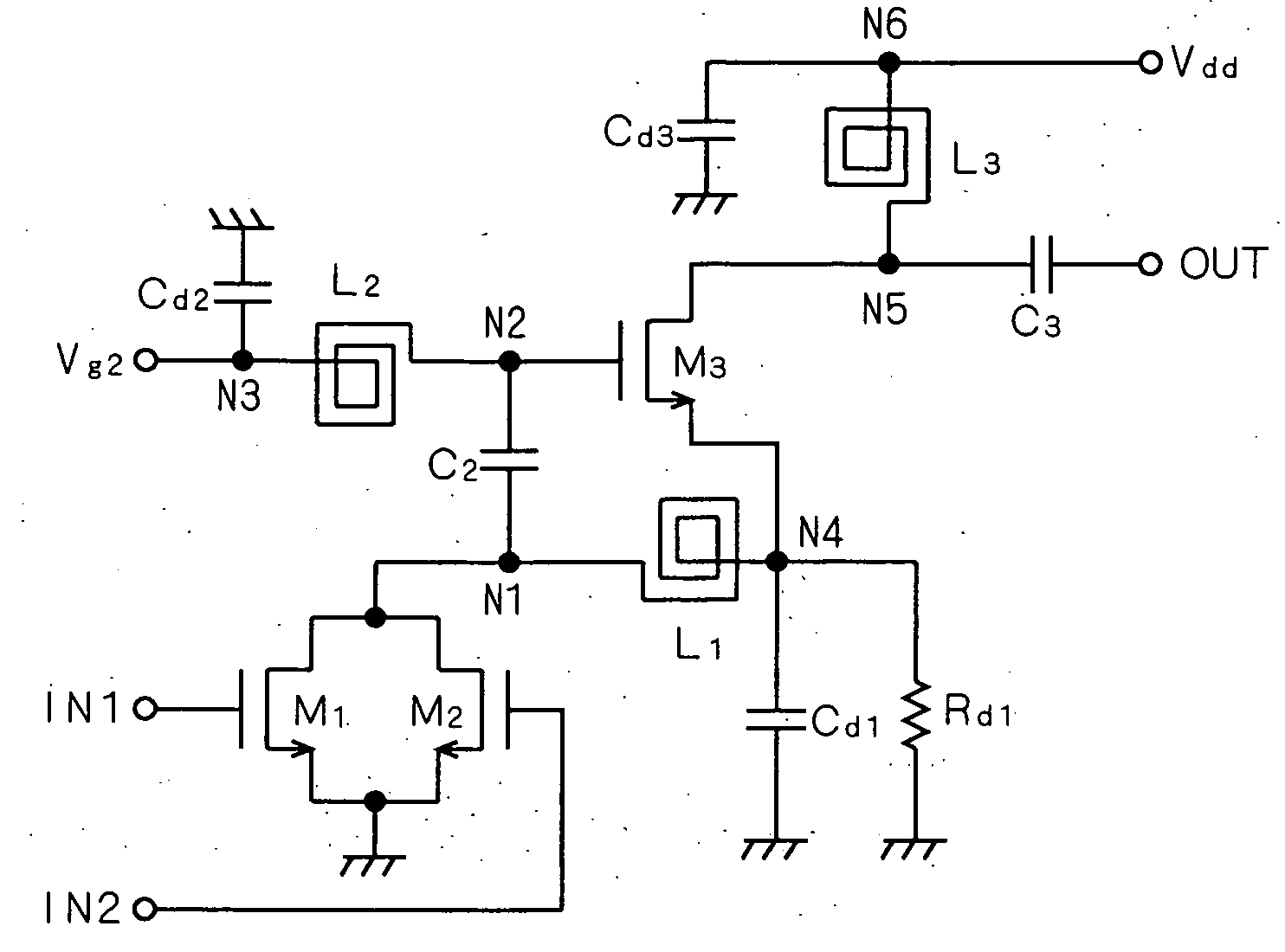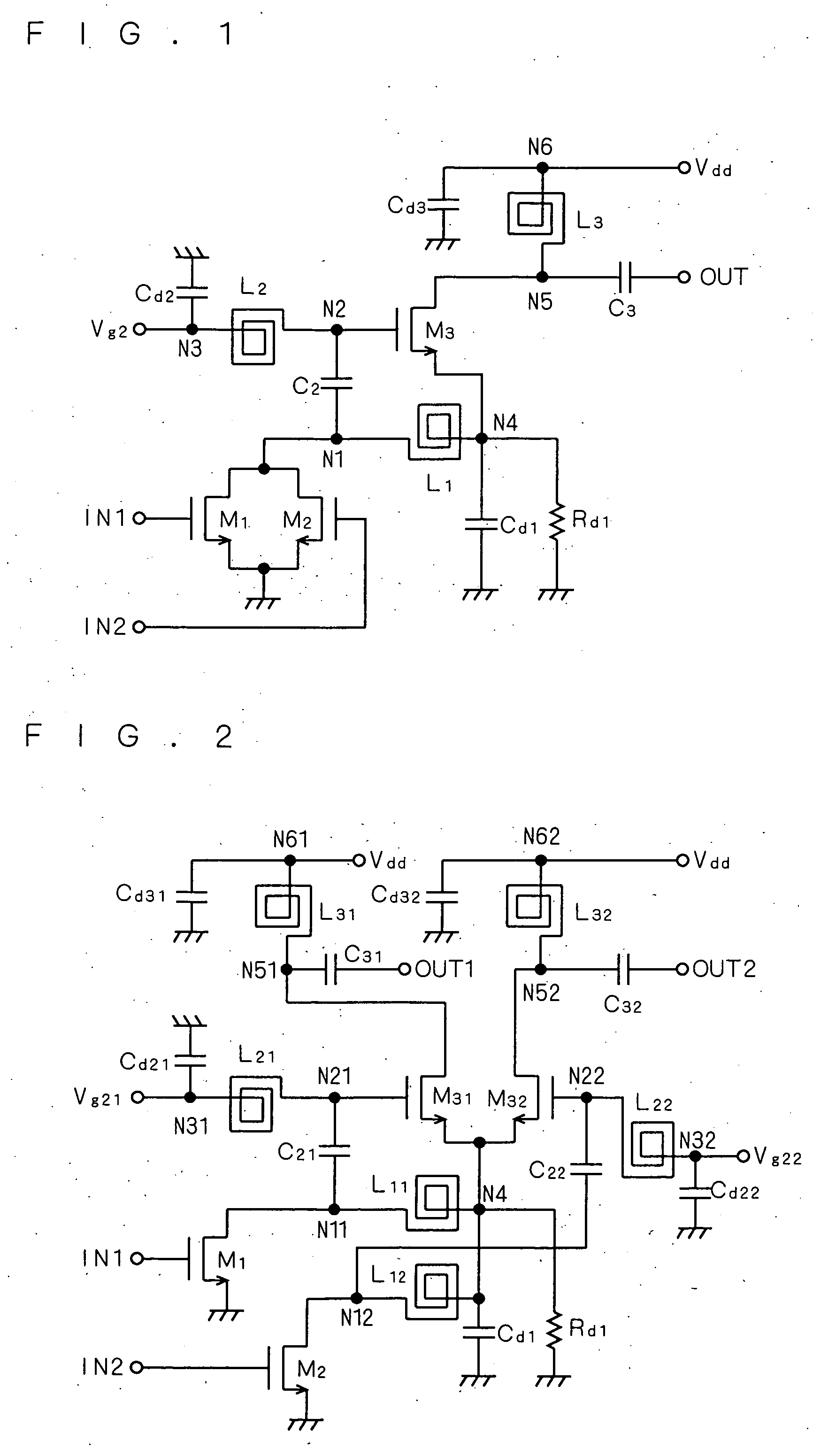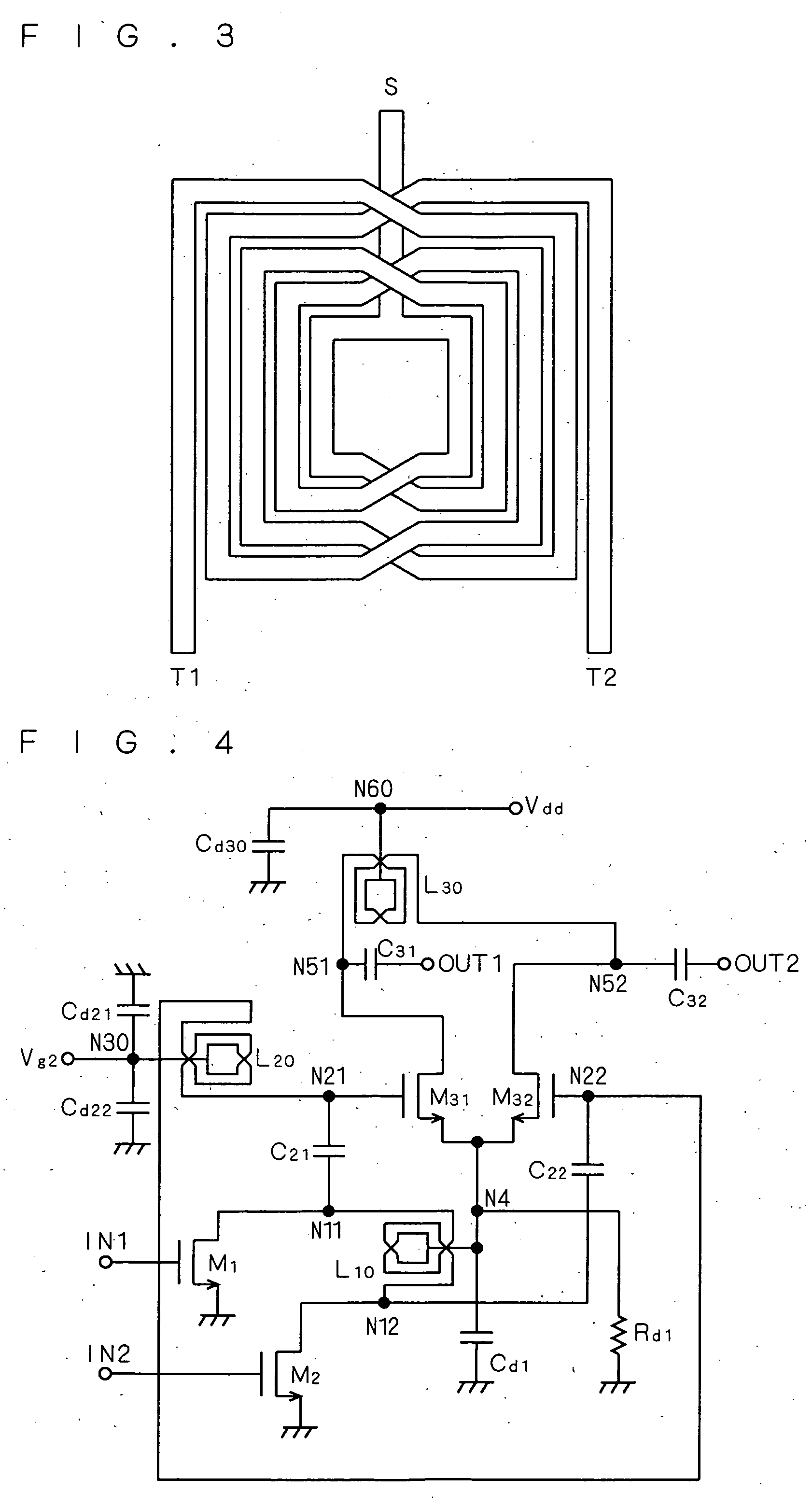Current-reuse-type frequency multiplier
a frequency multiplier and current-reuse technology, applied in the field of frequency multipliers, can solve the problems of difficult to obtain sufficient output oscillation at a power supply voltage of 1.8 v, easy to affect the operation of the first n-channel mos transistor, etc., and achieve the effect of reducing the inductance effect of ground wiring
- Summary
- Abstract
- Description
- Claims
- Application Information
AI Technical Summary
Benefits of technology
Problems solved by technology
Method used
Image
Examples
first preferred embodiment
[0025]FIG. 1 is a circuit diagram illustrating the structure of a current-reuse-type frequency doubler according to a first preferred embodiment of this invention. As shown, this current-reuse-type frequency doubler includes differential input terminals IN1 and IN2, an output terminal OUT, N-channel MOS transistors M1, M2 and M3, capacitors Cd1, Cd2, Cd3, C2 and C3, inductors L1, L2 and L3, and a resistance element Rd1. The inductors L1, L2 and L3 are formed of spiral inductors, for example.
[0026] Provided in the front stage of the current-reuse-type frequency doubler is a VCO (not shown) of differential operation having two differential output terminals. The differential input terminal IN1 is connected to one of the differential output terminals of the VCO, and the differential input terminal IN2 to the other differential output terminal of the VCO. RF signals in a complementary relationship with each other that are output from the VCO are input to the differential input terminals...
second preferred embodiment
[0041] A current-reuse-type frequency doubler having an input formed in a differential manner was described in the first preferred embodiment. Described in a second preferred embodiment is a current-reuse-type frequency doubler having both an input and an output formed in a differential manner.
[0042]FIG. 2 is a circuit diagram illustrating the structure of a current-reuse-type frequency doubler according to the second preferred embodiment of this invention. As shown, this current-reuse-type frequency doubler includes differential input terminals IN1 and IN2, differential output terminals OUT1 and OUT2, N-channel MOS transistors M1, M2, M31 and M32, capacitors Cd1, Cd21, Cd22, Cd31, Cd32; C21, C22, C31 and C32, inductors L11, L12, L21, L22, L3, and L32, and a resistance element Rd1. The inductors L11, L12, L21, L22, L31 and L32 are made of spiral inductors, for example.
[0043] Provided in the front stage of the current-reuse-type frequency doubler is a VCO (not shown) of differentia...
third preferred embodiment
[0057]FIG. 3 is a top view schematically illustrating the structure of a differential inductor. The differential inductor is a combination of a first spiral inductor having a terminal S as one end and a terminal T1 as a first other end, and a second spiral inductor having the terminal S as one end and a terminal T2 as a second other end, both of which are formed in the same region by using a plurality of wiring layers of multilevel wiring structure.
[0058] In a third preferred embodiment, the differential inductor is used to form the current-reuse-type frequency doubler according to the second preferred embodiment.
[0059]FIG. 4 is a circuit diagram illustrating the structure of a current-reuse-type frequency doubler according to the third preferred embodiment of this invention. As shown, this current-reuse-type frequency doubler includes differential input terminals IN1 and IN2, differential output terminals OUT1 and OUT2, N-channel MOS transistors M1, M2, M31 and M32, capacitors Cd...
PUM
 Login to View More
Login to View More Abstract
Description
Claims
Application Information
 Login to View More
Login to View More - R&D
- Intellectual Property
- Life Sciences
- Materials
- Tech Scout
- Unparalleled Data Quality
- Higher Quality Content
- 60% Fewer Hallucinations
Browse by: Latest US Patents, China's latest patents, Technical Efficacy Thesaurus, Application Domain, Technology Topic, Popular Technical Reports.
© 2025 PatSnap. All rights reserved.Legal|Privacy policy|Modern Slavery Act Transparency Statement|Sitemap|About US| Contact US: help@patsnap.com



